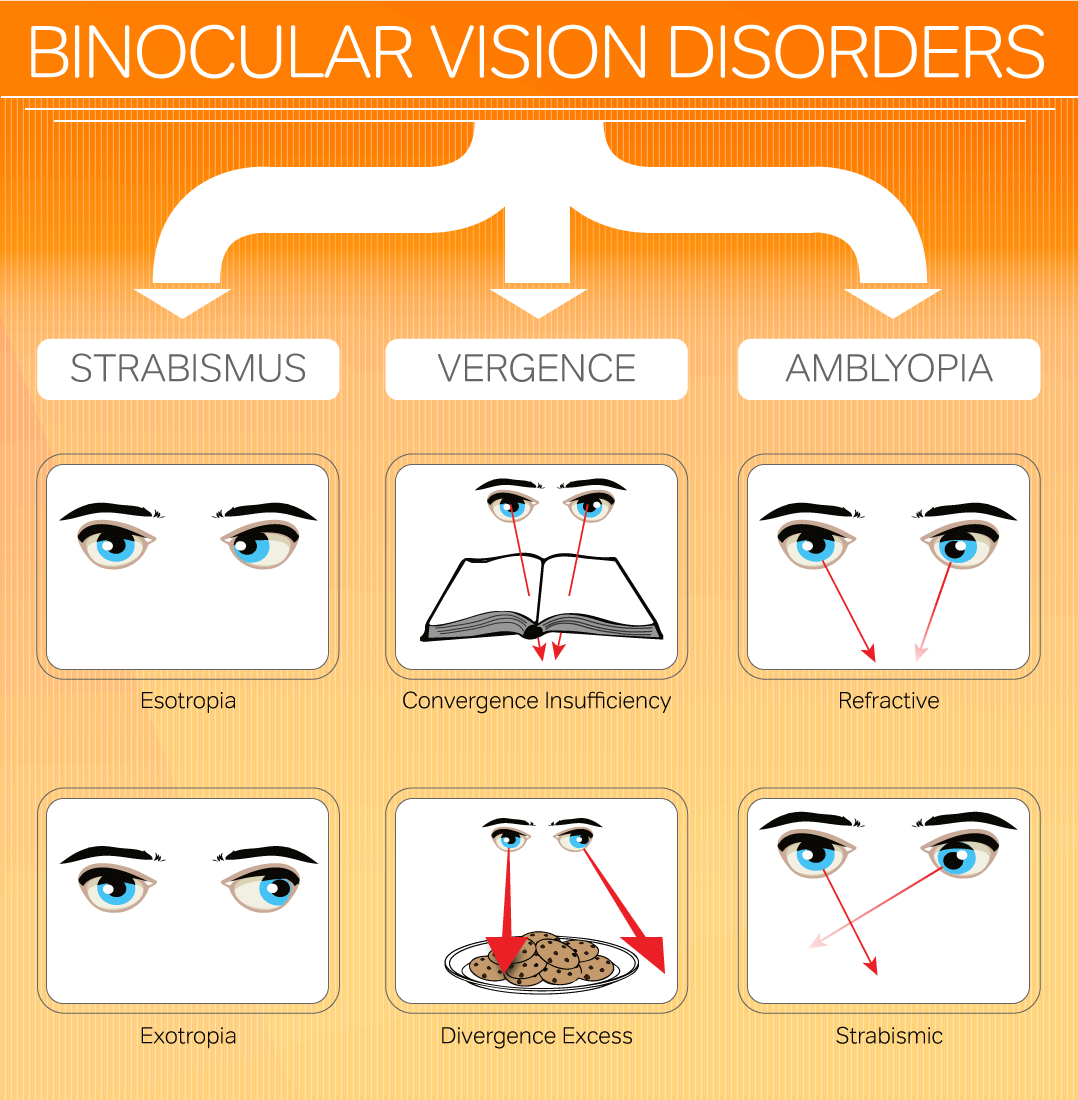服务
双眼视觉功能障碍 (BVD) 是指两只眼睛未能有效同步,导致它们之间缺乏有效的协同作用。在明显的眼睛错位情况下,可能会导致双重视觉,而较小的错位通常会导致保持单一图像。垂直异视 (VH) 可能是两只眼睛之间协调受损的后果。忽视治疗这种状况最终可能会导致出现垂直双重视觉的经历。

Binocular Vision Dysfunction (BVD) occurs when the eyes are not properly aligned, which means the line of sight from one eye does not coordinate with the line of sight from the other eye. This misalignment can be very small, often going undetected in standard eye exams, but it can still cause a variety of symptoms due to the strain it places on the visual system. Common symptoms of BVD can include:
- Pain-Related Symptoms: Frequent headaches, discomfort in the sinus and eye regions.
- Postural Issues: A tendency to tilt the head, potentially leading to neck and back pain. Prolonged head tilt may result in asymmetrical facial features and a furrowed brow on one side.
- Vestibular and Balance Challenges: Experiences of dizziness, imbalance, motion sickness, impaired depth perception, coordination difficulties, and a tendency to veer to one side while walking.
- Reading Difficulties: Quick onset of fatigue during reading, challenges in maintaining attention, frequent skipping of lines, losing one’s place, and words appearing to merge.
- General Visual Discomfort: Eye strain, difficulty seeing at night, blurred vision, and challenges with tasks requiring close focus.
- Binocular Vision Strain: Symptoms like double vision, reliance on one eye for reading, and heightened sensitivity to light.
- Psychological Impact: Increased anxiety in crowded or expansive spaces, indicative of the broader effect of BVD on overall well-being.
Each of these symptoms reflects the varied impact of BVD on daily activities and underscores the importance of proper diagnosis and management.
接下来应该做什么?
拥有20/20视力意味着一个人可以在标准眼图上的20英尺外看到一个特定的字母,这是一个正常视力的人预期能够清晰看到的距离。然而,这只是健康视力的一个方面。
对于6至18岁的儿童,在开始学校前和之后每年都接受全面的视力检查是很重要的。这些检查不仅评估视力的清晰度,还包括外部和内部眼部健康、色觉、通过屈光进行的光学验光和功能性视觉能力。
如果一个孩子在阅读和学习中遇到挑战,或者没有达到他们的潜力,那么进行专门的神经发育视觉评估就变得必要了。这也适用于年龄较小的儿童(幼儿到5岁)患有斜视(眼睛转动)或弱视(懒惰眼)等情况。成年人如果阅读困难或曾经头部受伤,也应考虑进行这种评估。对于有特殊需要、自闭症谱系障碍或发展迟缓的儿童来说,这尤其重要。
我们的神经发育视觉评估不仅仅是标准的20/20视力测试。它检查了阅读和学习所必需的关键视觉技能,例如:
- 眼睛协同技能:评估两只眼睛是否能够以协调的团队方式瞄准、移动和工作。弱的双眼视觉和协同技能可能会导致收敛不足和深度知觉受损等问题。
- 眼睛聚焦技能:评估眼睛在不同距离上保持清晰视野的能力。适当的、迅速的眼睛焦点调整对于阅读、写作和运动等活动至关重要。不足之处可能会导致视觉疲劳、阅读理解能力下降和对近距离工作的厌恶。
- 眼动技能:检查眼部运动中是否有足够的肌肉控制、跟踪和固定。流畅的眼部运动对于有效的阅读和在教室环境中调整焦点是必要的,并且对于运动中的眼手协调和视觉反应时间也有贡献。
什么是神经发育视觉评估?
神经发育视觉评估(NDVE)比标准眼部检查提供了更全面的评估,大约需要1到2小时。由我们熟练的视觉专家和治疗师进行的这种一对一评估旨在全面了解视觉系统如何处理信息并与其他感觉模式整合。它还评估了视觉是否最佳地支持个体表现。在评估过程中,我们请求家长友好地留在接待区。
在测试完成后,我们将分析结果并为随后的咨询准备好。这次会议将分别安排,包括我们的行为和发展验光师、患者和/或他们的父母,我们将审查研究结果并讨论潜在的治疗方法。
在某些情况下,评估可能会超出通常的时间范围,特别是如果视觉问题特别复杂。如果出现这种情况,我们的视觉专家将在当时提供详细的解释和指导。


